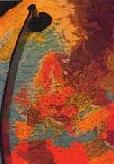

![[AUSSENPOLITIKFORSCHUNG]](/images/digbib/d_digbib.gif)

Political crisis in Russia : the regional dimension / Irina Busygina. - Bonn, 1993 (Studie der Abteilung Außenpolitikforschung im Forschungsinstitut der Friedrich-Ebert-Stiftung ; 58). - ISBN 3-86077-112-4
TEILDOKUMENT:
2. National Territorial Division of the Russian Federation
Understanding the territorial organization of Russia is the first step toward realizing its current regional problems. Without adopting the principle which forms the basis of Russia’s territorial organization, all fluctuations in regional development in Russia will not seem grounded and explicable to the reader.
Currently, the Russian Federation consists of 87 regions, not counting two cities of federal competence. But the inner federalization continues, so probably this number is not the final one. [ The mass media constantly use the number 88, which can be explained by an ignorance of geography. It is not clear how the number 88 came into use, but in Russia now there are 21 republics, 49 oblast, 6 kray, 10 autonomous okrug and 1 autonomous oblast, which gives a total of 87.] Basically, one can divide the regions into three different types according to the rights that they enjoyed under the old constitution.
A. Autonomous republics enjoyed the most far-reaching rights. They had been formed by certain titular nations and formally had the right to secede from the Russian Federation and establish their own sovereign statehood.
B. Territorial Units (kray, oblast) represent purely territorial, geographical regions without any national characteristics. They are populated mostly by Russians and their borders are rather arbitrary.
C. Autonomous Regions (autonomous oblast, autonomous okrug) are not only a part of the Federation; they also form parts of the administrative units and therefore must answer to regional as well as federal authorities. Most of these regions form the periphery of Russia, i.e. the North and South-East of its Asiatic part. They are sparsely populated by Russians and numerous aboriginal nationalities, which are so scanty that they cannot claim to form their own elements of statehood. These regions enjoy the fewest rights.
It is clear that the principle of Russia’s territorial division is two-fold: the national and the purely territorial. This dualism forms the very framework of Russia’s organization.
© Friedrich Ebert Stiftung | technical support | net edition fes-bibliothek | 9.1. 1998